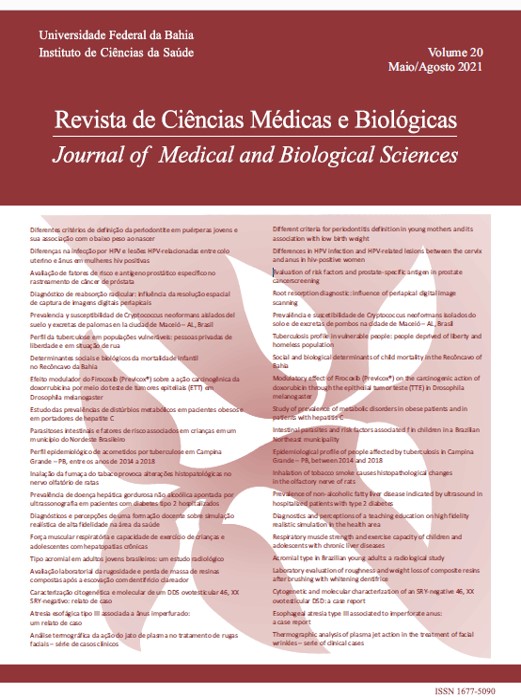Respiratory muscle strength and exercise capacity of children and adolescents with chronic liver diseases Exercise capacity in liver disease
DOI :
https://doi.org/10.9771/cmbio.v20i2.42775Mots-clés :
Liver Diseases, Chronic Disease, Maximal Respiratory Pressures, Walk TestRésumé
Introdution: Chronic liver diseases are characterized by inflammatory and fibrotic lesions of the liver that cause systemic complications. These complications can negatively interfere with the respiratory muscle strength and exercise capacity of developing children and adolescents. Objectives: To compare respiratory muscle strength and exercise capacity in children and adolescents with chronic hepatopathy, using reference values from healthy individuals of the same age. Methods: A cross-sectional study was performed. Children and adolescents from 6 to 16 years old with chronic hepatopathies were included. For the evaluation of respiratory muscle strength, the maximal respiratory pressures were measured through manovacuometry. A six-minute walk test was used to assess exercise capacity. The Wilcoxon test was used to verify the difference between the evaluated and predicted values of the distance traveled. Results: In total, 40 subjects were analyzed; 57.5% of the subjects were female, and the subjects had a mean age of 11.68±2.82 years. In the comparison between the measured and predicted maximal respiratory pressures, a difference of -17.71 cmH2O (p< 0.001) was found for the maximal inspiratory pressure, and a difference of -30.68 cmH2O (p< 0.001) was found for the maximal expiratory pressure. Regarding exercise capacity, the measured average distance traveled was 346.46±49.21 m, which was 185.54m (p< 0.001) less than the predicted value. Conclusions: Children and adolescents with chronic liver disease have reduced respiratory muscle function and exercise capacity.
Téléchargements
Téléchargements
Publiée
Comment citer
Numéro
Rubrique
Licence
(c) Tous droits réservés Revista de Ciências Médicas e Biológicas 2021

Ce travail est disponible sous la licence Creative Commons Attribution 4.0 International .
A Revista de Ciências Médicas e Biológicas reserva-se todos os direitos autorais dos trabalhos publicados, inclusive de tradução, permitindo, entretanto, a sua posterior reprodução como transcrição, com a devida citação de fonte. O periódico tem acesso livre e gratuito.






